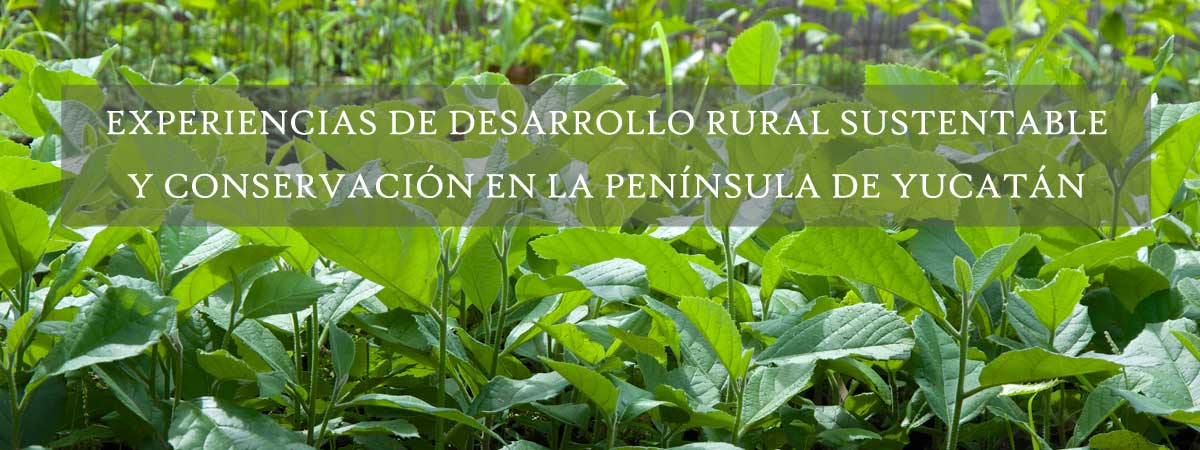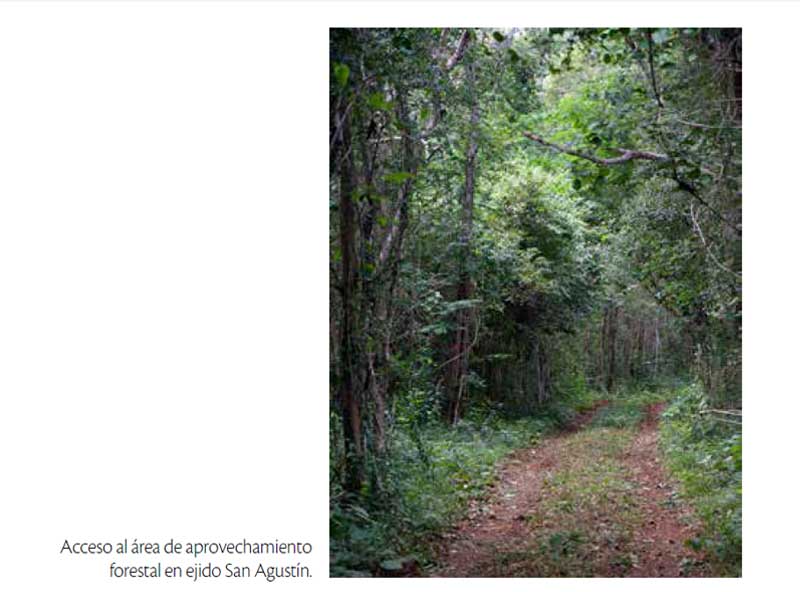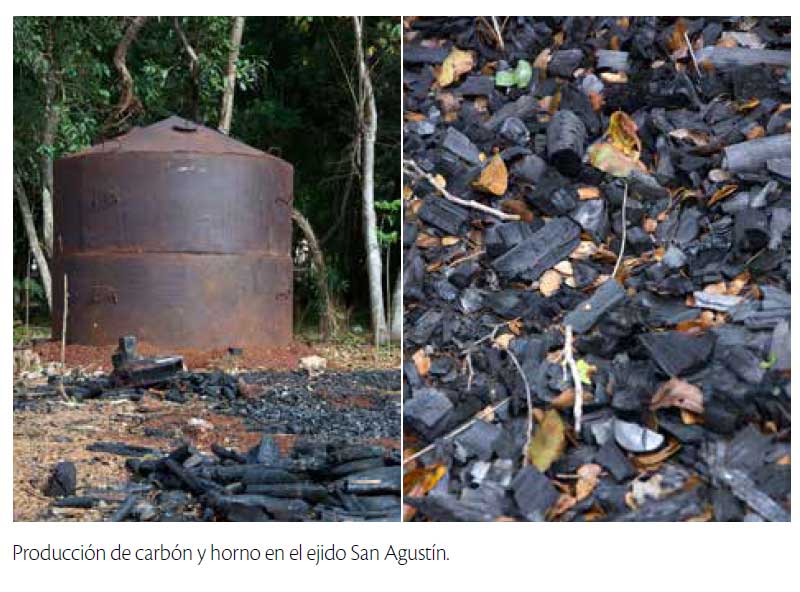Sustainable forestry in the ejido San Agustín
 Introduction The obstacles were many: it was a distant land, with no roads or services, only lush jungle that few wanted to go to. Despite these conditions, about a hundred people came from Tekantó to establish the ejido San Agustín and the community that they called Salvador Alvarado, thought-out to house about six hundred people. However, the environmental conditions were hostile, and soon people started to return to Tekantó until only seven people remained in the community, including Don Benustiano Cutz Mex. Today there are 360 landowners in the records of the National Agrarian Registry, out of which only 29 are living in the community; and together with some other neighbors the population registered in Salvador Alvarado is something less than a hundred inhabitants. In those years, Claudio Franco Chulín, who had been visitor from the Attorney General's Agrarian Office and knew the area well, was part of the board of Bioasesores, a civil association that provides technical assistance in natural resource management and community development, among other activities. Mr. Benustiano was president of the ejido, and also secretary of Nukuch K'áax, another civil association of agrosilvopastoral producers from various ejidos in the area. The conditions were conducive so that in 2006, Bioasesores with the ejido San Agustín submitted the first application to CONAFOR for getting support for forest enterprises. They received support for reforestation, environmental compensation for land use change and PES. In 2009, an application was submitted to develop a plan for sustainable forestry use in the vast expanse of well-preserved forests that characterize these lands today. In the beginning, the inhabitants of Salvador Alvarado had not understood the implications and the benefits the project had, since in the region there were similar initiatives. A general feeling was that it would be for the benefit of landowners and not for the entire community. Additional to this, the idea of forest conservation had already begun to be part of a common vision in the population, which also began to dream of an ecotourism project. Partly because of lack of knowledge on the activity, the proposal for sustainable use was mistakenly associated with deforestation. Those who believed in the project continued, and a first market study indicated they should ideally start with charcoal production. For this, a secondary growth forest in the boundaries with another ejido seemed to meet the requirements they sought.
In November 2011 forest exploitation was authorized after two years of negotiations with SEMARNAT. However, it was not until 2013 that the environmental impact assessment was finalized and approved, and with it the ejido began its forestry operations. During this interval of time and with the support of the "Diversification of logging on the NCPA San Agustín, Tekax" project funded by the Small Grants Program-UNDP, a portable sawmill was acquired and trainings were conducted on measuring trees and their growth rates with minimal impact harvesting, charcoal production, and even on how to apply for grants. Learning exchanges with the Noh Bec (Quintana Roo) and 20 de Noviembre (Campeche) ejidos also took place, and materials such as the furnaces for charcoal production were purchased.
It took four years to move from the forest inventory to the first sale, which was not charcoal, but tutors (wooden rods of 5 cm in diameter). The sale of the first batch of tutors to the Company Valle del Sur (Municipality of Tekax) is possibly the first major milestone in the project, because it showed the community that it is possible to have economic resources without depleting the forest. This realization made more people in Salvador Alvarado approach the leaders of the project and participate. By allowing anyone in the ejido to join including youth, children and grandchildren of ejido dwellers, as well as women, this also proved that forestry was not just for landowners. In order to strengthen the process, and to not only make landowners work, the Forest Producers Society of San Agustín, Tekax SPR de RL was created. This society is composed of women, youth and community dwellers, who take decisions at meetings. Moreover, they were continuously present in the areas under management reduced the incidence and pressure from external poachers. Thus, by increasing their ownership of their forest territory and unlocking its value, threats to their resources also decreased Lessons learnedAn important lesson is that you must know very well the laws that regulate the activity in order to avoid mistakes. For example, when the environmental impact assessment was drawn up, the presence of Grisons (Galictis vittata) was mentioned by mistake. However, the fact is that there is not even evidence of them; but that mistake made the approval more difficult. SEMARNAT indicated that at least 700 hectares should be excluded as compensation, almost a third of the total land use area (2,254 hectares). Over 1,000 hectares of conservation area that the ejido had could not be considered as compensation area because they were located away from the area of forest use. The accepted proposal was to allocate another 700 hectares for conservation adjacent to the area of forest use. Finally, the consequences were unexpectedly positive, and today the 700 hectares have a PES program of matching funds, plus another area that has PES by CONAFOR. Don Benustiano Cutz Mex recalls, "once a visitor came and said to us: ‘you are rich, you are sitting on a lot of money’, and I asked where is it? He replied ‘wealth is there, all you have to do is open your eyes‘. For me this is a dream that is coming true. We have not reached our final goal and are still improving our forest management, but we are on the right path to doing so and with a solid community to continue along this journey". . |





















